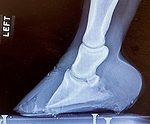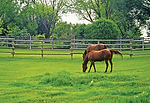Advertise Follow Us
Items Tagged with 'PPID'
ARTICLES
Understanding the signs & involving a veterinarian quickly improve outcomes
Read More
Managing Chronic Laminitis Requires an Adaptable Strategy
Executing a shoeing package requires collaboration with vets, creative adjustments & frequent radiographs
Read More
Hoof Nutrition Intelligence
Is my insulin-resistant horse likely to suffer from laminitis?
Read MoreHoof Nutrition Intelligence
Can the particular region where a horse lives have an impact on potential Cushing’s disease dangers?
Read MoreGuarding Against Springtime Laminitis
Educating clients and being vigilant for early warning signs can head off this potentially deadly malady
Read More
Hoof Nutrition Intelligence
What diet changes do I need to make with a horse suffering from endocrine laminitis?
Read MoreResearch Journal: July/August 2016
The information, ideas and opinions expressed are those of the author and do not necessarily represent those of the United States Department of Agriculture.
Read More
EVENTS
Webinar
2025 Silver Jubilee NO Laminitis! Conference
10/31/25 8:00 am to 11/2/25 5:00 pm CDT
United States










